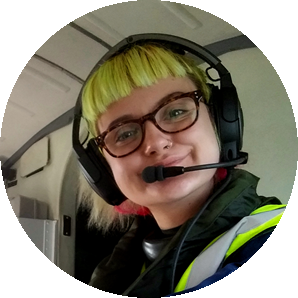Prudence Bateson
University of Manchester , United Kingdom
- Conference: Methane
- Presentation: Aerial survey of methane emission fluxes from natural gas infrastructure in the North Sea
- Presentation Time: Wednesday


I am a PhD Researcher at the University of Manchester, UK, in my second year working on methane emissions and fluxes from sources across the globe. I am particularly interested in tropical wetland and off-shore oil rig emissions and the subsequent modelling of plumes and various methods of quantifying and modelling methane fluxes. I also work aboard aircraft for airborne methane data collection; the National Environmental Research Council (NERC)'s BAe-146 (FAAM) and British Antarctic Survey (BAS) Twin Otter aircraft.
My doctorate study is in partnership with NERC EAO Doctoral Training Partnership and the Facility for Airborne Atmospheric Measurement (FAAM) whose support is gratefully acknowledged.
Monitoring the emission of methane from marine oil and gas infrastructure is important for both industry and wider scientific community efforts to understand and mitigate the ongoing effects of anthropogenic climate change. As part of part of the UN Climate and Clean Air Coalition (CCAC), industry and scientific partners work to monitor and accurately report emissions estimates. The UN CCAC has afforded two years of aircraft-based case study campaigns in the southern North Sea across 2018-2019 with flight campaigns using the British Antarctic Survey Twin Otter aircraft. In this case paper, we discuss flight campaigns conducted across a five-day period in April 2018 around active oil and gas fields, to assess methods of flux calculation and modelling to determine the source and emission fluxes from southern North Sea oil and gas operations.
< br>
Two different types of survey, regional and targeted, were used to provide (1) an overall picture of the activity of the gas field and (2) detailed case study and flux work, respectively. Regional surveys were found to provide limited scientific value in case study approaches for single flights, whereby subtleties in background measurements and attempts toward bulk flux calculation can lead to misidentification of sources (Cain et al., 2017). The targeted surveys of individual platforms captured emission plumes across 2 flight days in April 2018. Here, we will discuss some of the complexities and challenges in sampling and modelling related to meteorology, instrumental characteristics and sources of random and systematic error in emission estimates from different quantification approaches, and report the emission fluxes and uncertainties from this case study.
< br>
Data collection is also to be conducted in April 2019 aboard the Twin Otter as this part of UN CCAC campaign reaches its second year. At the time of submission, we aim to provide a look to the future of the project across the coming year in the context of fully realised data from 2018 and preliminary data collection in 2019.